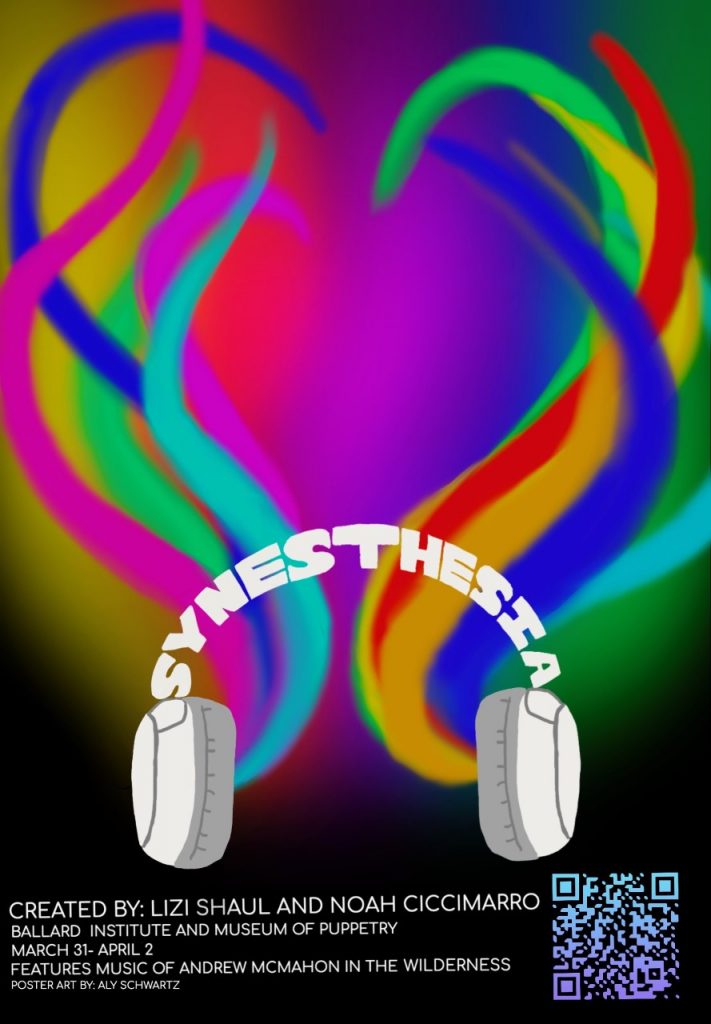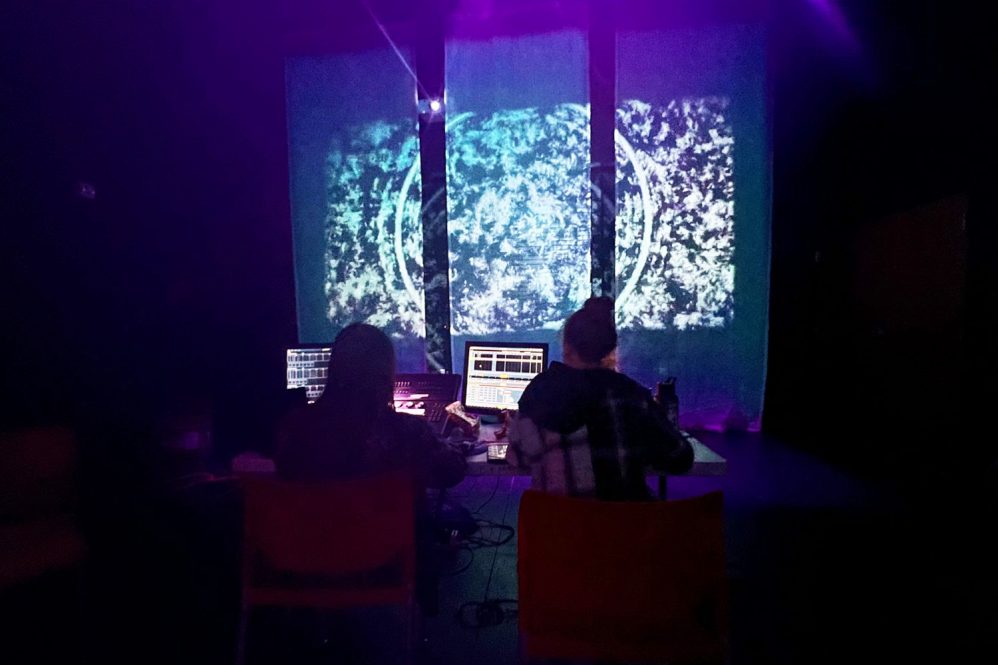Lizi Shaul ’23 (SFA, CLAS) used to think everyone saw color when they heard their mother’s voice – for her, pale purple.
She also didn’t think it strange that letters would appear in different colors until, in high school, a teacher asked her to read the blue words on a page and doing so didn’t fully make sense – for her, As were red, Bs yellow, and Cs orange.
A lesson on synesthesia in a high school psychology class finally gave her a way to describe the way she saw the world, and until then thought everyone else did too. She’s a synesthete, someone who unconsciously activates multiple senses in response to a stimulus, like tasting something when looking at a painting, smelling a scent when hearing a bird chirp, or, like Shaul, seeing a wave of dark blue when her father speaks.
Stumbling onto a name for the neurological condition is the way most people find out they have it, Shaul says: “Someone says something that doesn’t fully click or somebody who has it asks if you’ve ever visualized music. And then you realize it’s not the experience that everybody is having.”
That’s how Noah Ciccimarro ’25 (SFA) found out he has it.
“In senior year of high school, I was talking with my band teacher, and he mentioned people who use synesthesia for perfect pitch. At the time, I had no clue what synesthesia was, and I honestly thought that everyone saw what I saw,” he says.
Shaul and Ciccimarro hope to convey synesthetic imagery for a general audience during their student production of “Synesthesia,” which runs for six performances March 31-April 2 at the Ballard Institute and Museum of Puppetry.

In the 47-minute program, attendees will hear 12 songs from the band Andrew McMahon in the Wilderness while watching wall projections that mimic the visualizations seen by a synesthete. Think washes of color that blend into each other or slink across the screen, maybe even strobe at tempo.
The show focuses on this type of synesthesia, seeing visuals in response to sound, Shaul says, explaining there are dozens of other types and each synesthete’s experiences are unique, so she and Ciccimarro see very different visuals even when they hear the same song.
“My main goal is to do theater that helps people to understand each other,” says Shaul, who will graduate with a BFA in theatrical design and production and a BA in psychology. “My passion is figuring out how to take what’s in a person’s head and put it on stage, whether through emotions or a physical thing, like with this show. I want to take a person’s feelings or experiences that not everybody has and make them understandable to other people.”
She says she’s been thinking about this production since touring UConn as a high school senior and seeing a poster advertising the 2018 performance of “Synesthesia” on the von der Mehden stage. She was impressed that someone outside the psychology field knew what it was, happy the School of Fine Arts was supportive of such a project, and eager to put on her own spin.
Michael Chybowski, UConn associate professor of lighting design, headed that production, which brought together the departments of Dramatic Arts, Music, and Digital Media & Design and UConn’s Music Dynamics Laboratory for a full-scale production with five projection screens.
About a year ago, when Shaul asked Chybowski if he would be the faculty advisor for her performance, he says he gave her a wholehearted yes, agreeing to help navigate the process of putting on a show and offering advice, like how to find and use those projection screens.
“This is different from traditional theater,” Chybowski says. “It’s a different way to experience something that is very real and a different kind of classification of what constitutes theater.”
There are no actors, Shaul says. There is no script.
“It’s all about taking what people who visualize music see and putting it into physical space through projections and sound,” she says, noting the theater setup with be different, too, with the audience sitting back-to-back in the museum’s small black box theater and projections on opposing walls. “It’s about being completely surrounded by this visual and being able to experience the sound really coming from every direction.”
Ciccimarro, a theatrical design and technology major, started as the show’s lighting designer and says he slowly took on additional responsibility, eventually earning him a nod from Shaul as co-creator.
“We’ve been working on this show for over a year now with so many people working interdepartmentally and none of us has really seen the final product yet,” he says. “I’m really excited to see all parts of the tech process all at once.”
The student-driven production, funded as a D-series show with departmental financial support, has spent the last several days in what’s called tech week – usually the week before opening night when the technical aspects of a show are worked out. That’s when everyone involved sees a project’s various pieces come together before the rest of the world does.
“You’ll see with the different people designing each song, everything looks drastically different from each other. None of it is homogeneous,” Shaul says of the projections. “Even now, sitting with some of the people who are helping with projection design who don’t have synesthesia, they’re still asking me, ‘You see this?’ It’s so different to imagine when you don’t have it.”
Shaul says having synesthesia likely is the reason she ended up studying sound design, and it’s been a driver in Ciccimarro’s lighting focus.
“Sound is really powerful, it’s able to make people feel certain things or take memories they already have and pull them out,” Shaul says. “Adding the visual aspect to an already powerful sense is really cool.”
Performances of “Synesthesia” will be held Friday at 7 and 8:30 p.m., Saturday at 7 and 8:30 p.m., and Sunday at 1 and 2:30 p.m. at the Ballard Institute and Museum of Puppetry. Tickets are free and available online.



